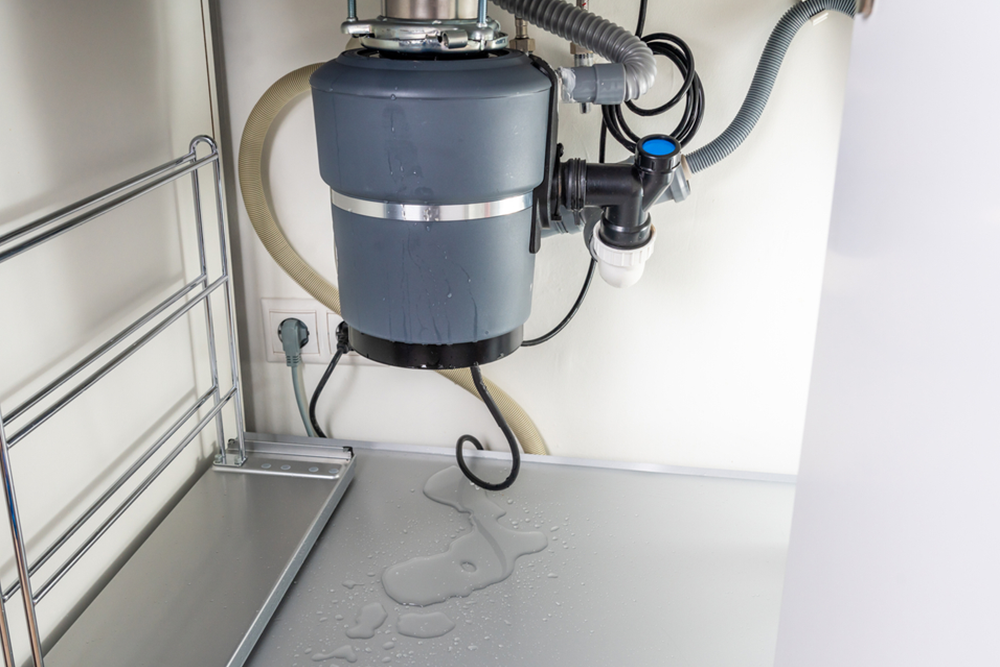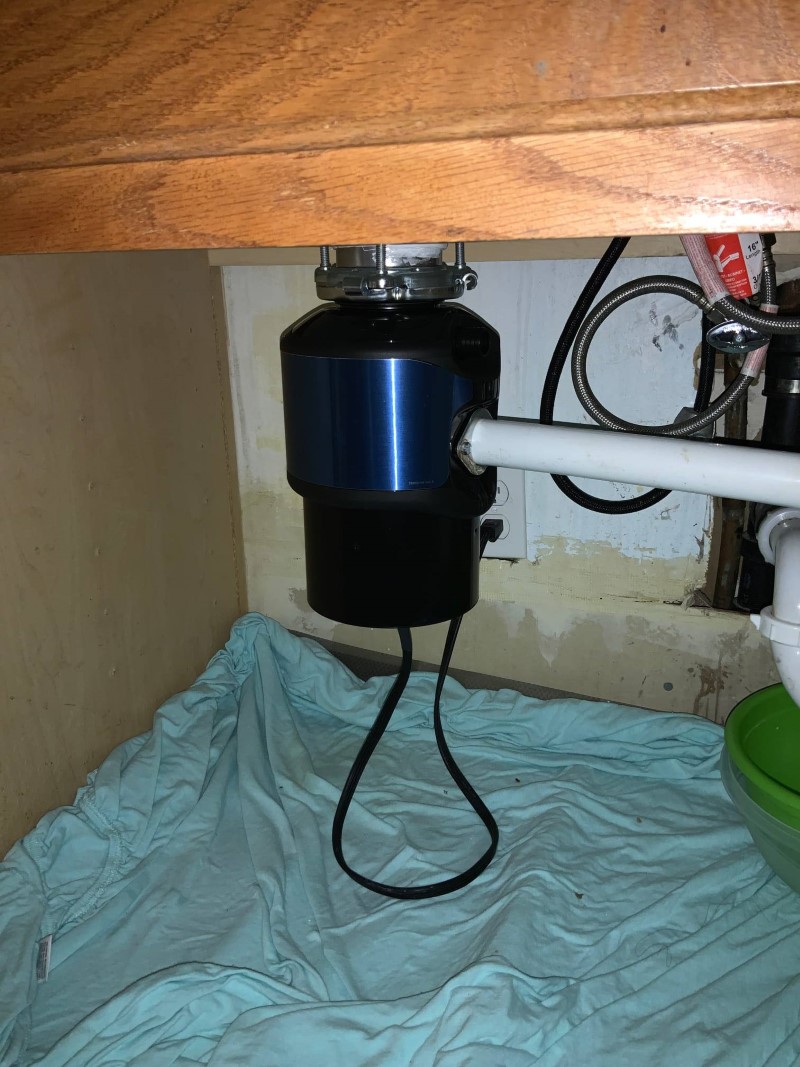My Comprehensive Guide to Fixing a Leaky Garbage Disposal
My Comprehensive Guide to Fixing a Leaky Garbage Disposal
Blog Article
We've come across this article pertaining to The Handy Guide To Fixing Your Garbage Disposal Leaking listed below on the web and believe it made sense to talk about it with you here.

Garbage disposals are important kitchen home appliances that aid in throwing away food waste successfully. Nevertheless, a leaking waste disposal unit can be a discouraging and messy issue to take care of. Luckily, lots of leakages can be taken care of quickly with a few easy actions. In this post, we will talk about how to deal with a leaking waste disposal unit successfully.
Introduction
Waste disposal unit are installed under kitchen area sinks and are made to shred food waste into smaller items, enabling it to go through the plumbing system conveniently. While these gadgets are generally trustworthy, leaks can occur in time because of wear and tear, loosened connections, or damage to the unit.
Typical Sources Of Leakages in Garbage Disposals
Worn Seals and Gaskets
Seals and gaskets play an important duty in stopping water from dripping out of the garbage disposal. Over time, these parts can deteriorate, resulting in leakages around the disposal device.
Loose Links
The connections in between the garbage disposal and the pipes system can come to be loose gradually, causing water to leakage out during operation.
Cracks or Holes in the Disposal Unit
Physical damage to the waste disposal unit, such as fractures or holes in the real estate, can likewise result in leaks.
Recognizing the Source of the Leakage
Prior to trying to take care of a leaking garbage disposal, it is essential to recognize the resource of the leak. This can usually be done with aesthetic inspection or by conducting simple examinations.
Visual Assessment
Examine the waste disposal unit unit meticulously for any type of indicators of water leak. Pay very close attention to locations around seals, gaskets, and link factors.
Examining for Leaks
One method to test for leakages is by running water through the disposal system and checking for any noticeable indicators of leak.
Tools and Products Needed for Fixing a Leaking Waste Disposal Unit
Prior to starting the repair procedure, gather the essential devices and materials, including a screwdriver, adjustable wrench, plumbing's putty, replacement seals or gaskets, and epoxy or patching material for repairing splits or openings.
Step-by-Step Overview to Taking Care Of a Dripping Garbage Disposal
Turn Off the Power
Prior to attempting any repair work, make certain that the power to the garbage disposal system is shut off to prevent the risk of electric shock.
Locate the Leakage
Determine the exact area of the leak and establish the reason.
Tighten Links
Use a wrench to tighten any type of loose links between the disposal system and the pipes system.
Change Seals or Gaskets
If the leak is because of worn seals or gaskets, get rid of the old elements and replace them with new ones.
Patching Fractures or Holes
For fractures or holes in the disposal system, usage epoxy or an ideal patching product to seal the damaged location.
Checking the Waste Disposal Unit After Repair
Once the repair is full, evaluate the waste disposal unit by running water via it to ensure that the leak has been settled.
Preventive Upkeep Tips to Stay Clear Of Future Leakages
To stop future leaks, it is important to carry out regular maintenance on your waste disposal unit. This includes keeping it clean, preventing putting non-food items or tough things down the disposal, and regularly checking for leaks or various other issues.
Conclusion
In conclusion, fixing a dripping garbage disposal is a relatively straightforward procedure that can be finished with basic tools and products. By complying with the actions described in this article and practicing precautionary upkeep, you can keep your waste disposal unit in good working problem and stay clear of costly repair services in the future.
HERE’S HOW TO FIX YOUR GARBAGE DISPOSAL
WHAT TO DO IF SOMETHING IS STUCK IN YOUR GARBAGE DISPOSAL
If the impeller won’t turn, there’s probably something stuck in the disposal. It could be a steak bone or peach pit, although plumbers report pulling all sorts of inappropriate objects out of disposals, such as bottle caps or aluminum foil. Make sure power to the disposal is off, and look inside to see if you can see the source of the jam.
Never stick your fingers in a disposal. Pull out anything you see with tongs or pliers.
If the disposal still won’t work, it may be time to call a plumber or consider buying a new disposal. GEM Plumbing & Heating is here for all of your garbage disposal needs.
WHAT TO DO IF YOUR GARBAGE DISPOSAL DRAIN IS CLOGGED
Take everything out from underneath your sink and put a bucket or other container under your disposal to catch any water that drains out. Disconnect your disposal from the power supply. If it’s plugged into a wall outlet, unplug it. If it’s hardwired into an electrical box, go to the electrical panel and turn off the breaker for the disposal. Pour ¼ cup of baking soda into the drain, followed by ½ cup of white vinegar. Give the solution a few minutes to fizz and do its work. Look into the disposal with a flashlight to see if you can see an object that might be causing the clog. If you see it, remove it using tongs or pliers. MORE TIPS ON DEALING WITH A CLOGGED GARBAGE DISPOSAL
Never use drain cleaner in a garbage disposal. It can damage the plastic parts inside the disposal. You can also be splashed with the caustic liquid while working to clear the clog. Beware! Never stick your fingers into a garbage disposal. Trust us — not a good idea. In many instances, your dishwasher drains through your garbage disposal. This allows the disposal to grind any large food particles that may be drained out of your dishwasher. There are some jurisdictions, however, where the plumbing code prohibits such a connection. WHAT TO DO WHEN YOUR DISHWASHER DRAINS THROUGH THE DISPOSAL
Run some water in the sink so your plunger has at least a ½-inch of water to create a seal and plunge vigorously up and down several times. You may need to repeat this several times. Run hot water down the drain to clear any residue that remains.

We are very interested in Why Is and I hope you appreciated the piece. Those who liked our page plz do not forget to pass it around. Thank-you for going through it.
Get Offer Report this page